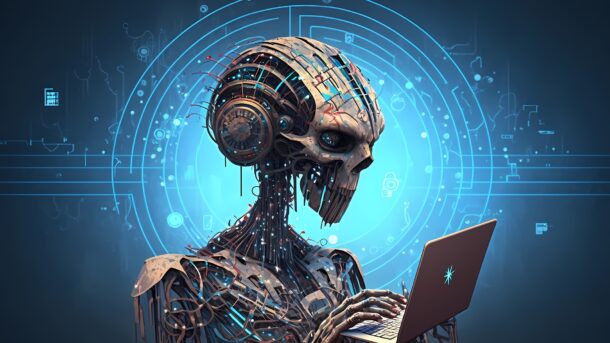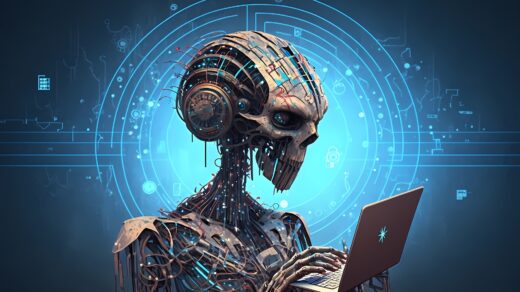As we progress further into the digital era, one word that keeps resounding in the IT industry is ‘Machine Learning’ (ML). This subset of Artificial Intelligence (AI) has become crucial to several sectors and elements of daily life, pushing previously believed unattainable boundaries. But what is machine learning, how does it operate, and why is it so revolutionary? This thorough tutorial seeks to answer these issues by giving insights that will help you navigate the world of machine learning.
Understanding Machine Learning
At its foundation, machine learning incorporates algorithms that allow computers to learn from and make judgments or predictions based on data. Unlike traditional programming, in which systems adhere to explicitly specified rules, ML algorithms construct a mathematical model based on sample data (or ‘training data’) to make predictions or judgments without the need for explicit programming.
There are three types of ML algorithms: supervised learning, unsupervised learning, and reinforcement learning. Each kind uses a diverse set of approaches and techniques to cater to a wide variety of applications, ranging from predictive analytics to data mining, personalized recommendation systems to driverless cars.

Importance of Machine Learning in Data Science
Machine learning is crucial in the field of Data Science. It assists in deciphering trends, patterns, and insights from the massive volumes of data created today, allowing organizations to make educated decisions.
For example, machine learning’s predictive analytics capabilities may aid in forecasting customer behavior, market trends, and operational concerns, among other things. This capacity to accurately forecast future occurrences is a crucial element pushing the integration of ML in numerous areas.
Deep Learning: The Next Frontier of Machine Learning
Deep Learning, a subtype of machine learning, is inspired by the workings of the human brain. It employs artificial neural networks with many layers of processing units, hence the name ‘deep.’ These networks can learn and make intelligent judgments on their own, outperforming typical machine learning models in terms of sophistication.
Deep learning models excel at managing big, complicated datasets, making them vital in disciplines such as computer vision, natural language processing (NLP), and self-driving cars.
Applications of Machine Learning
The applications of machine learning are many. Predictive models in healthcare can aid in early illness identification, whilst algorithms in finance can detect fraudulent transactions. Retailers utilize machine learning for personalized marketing, while the entertainment sector employs it for recommendation engines. Machine learning also enables breakthrough self-driving vehicles and voice assistants, demonstrating its broad influence.
Future Trends in Machine Learning
As we look ahead, we can see that ML’s potential is growing. Some of the trends projected to affect the machine learning landscape include AI-driven automation, edge computing, and quantum machine learning. Furthermore, the growth of explainable AI, which focuses on making machine learning models more interpretable and visible, represents an important advancement for ethical and responsible AI deployment.
Conclusion
Machine Learning has undeniable transformational potential. Understanding its mechanisms uses, and future developments are becoming increasingly important as it continues to infiltrate numerous areas. In an increasingly data-driven world, the ability to leverage the potential of ML may be a huge difference in any business.
We can harness the potential of data by delving into the depths of machine learning, paving the way for a future in which AI is not simply an auxiliary tool, but a key engine of innovation and advancement.
Read More
Deep Learning: Revolutionizing AI Through Advanced Neural Networks
Harnessing the Power of Artificial Intelligence: A Game-Changer Digital Era
Foldable Devices: A Revolution in Mobile Technology
Electric Vehicles: Driving the Future of Sustainable Transportation
The Ultimate Guide to Smart Home Technology: Revolutionizing Modern Living
What is Machine Learning?
Machine Learning is a subset of AI that involves the application of algorithms to enable computers to learn from and make judgments or predictions based on data. It helps systems to learn from data, recognize patterns, and make choices with little or no human interaction.
What are the different types of Machine Learning?
Supervised Learning, Unsupervised Learning, and Reinforcement Learning are the three forms of machine learning. Supervised Learning entails learning from labeled training data and predicting outcomes based on that data. Unsupervised Learning is the process of learning from unlabeled data and discovering patterns within it. Reinforcement Learning is similar to training a dog to do a task in that it is based on incentives and penalties.
How is Machine Learning used in everyday life?
In our daily lives, machine learning is commonly employed. Machine learning is at work when Netflix recommends a movie or TV show. Machine learning is used when your email software filters out spam. Voice assistants like Siri and Alexa, personalized marketing adverts, credit card fraud detection, and even self-driving automobiles are examples of further uses.
What is the difference between AI and Machine Learning?
Artificial intelligence is a wide term for machines or computers that accomplish jobs that normally need human intellect. Machine Learning, on the other hand, is a subset of AI that entails allowing machines to learn from data without being expressly taught to do so. To put it simply, all machine learning is AI, but not all AI incorporates machine learning.
What skills are needed for Machine Learning?
A thorough grasp of mathematics (particularly statistics and algebra), competency in programming languages such as Python or R, a good understanding of ML techniques and libraries, and knowledge of software engineering concepts are some basic talents for Machine Learning. It’s also helpful to understand data management and visualization.
What are the future trends in Machine Learning?
Explainable AI (XAI), which aims to make AI decision-making processes more transparent and understandable, AI automation, which automates the process of training and deploying ML models, and advancements in reinforcement learning, which will enable machines to learn more effectively from interaction with their environment are some future trends in machine learning.
What are the challenges in Machine Learning?
Obtaining and cleaning high-quality training data, selecting the proper ML model, preventing overfitting or underfitting, protecting data privacy, and making the AI decision-making process accessible for users (Explainable AI) are some of the issues in Machine Learning.






